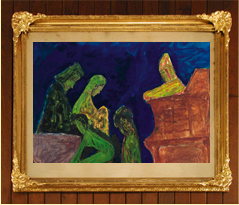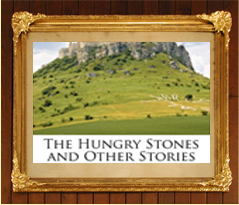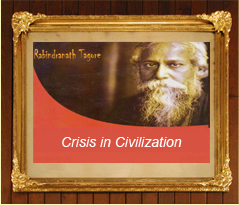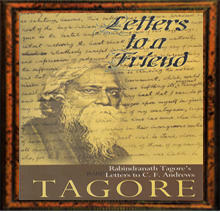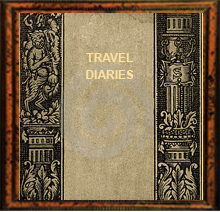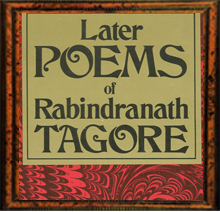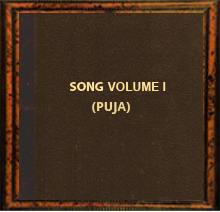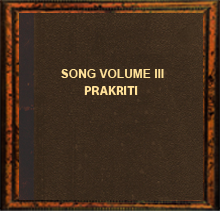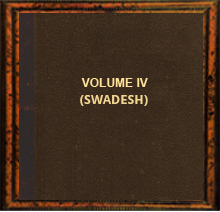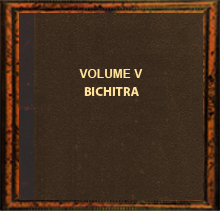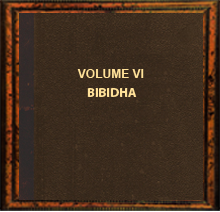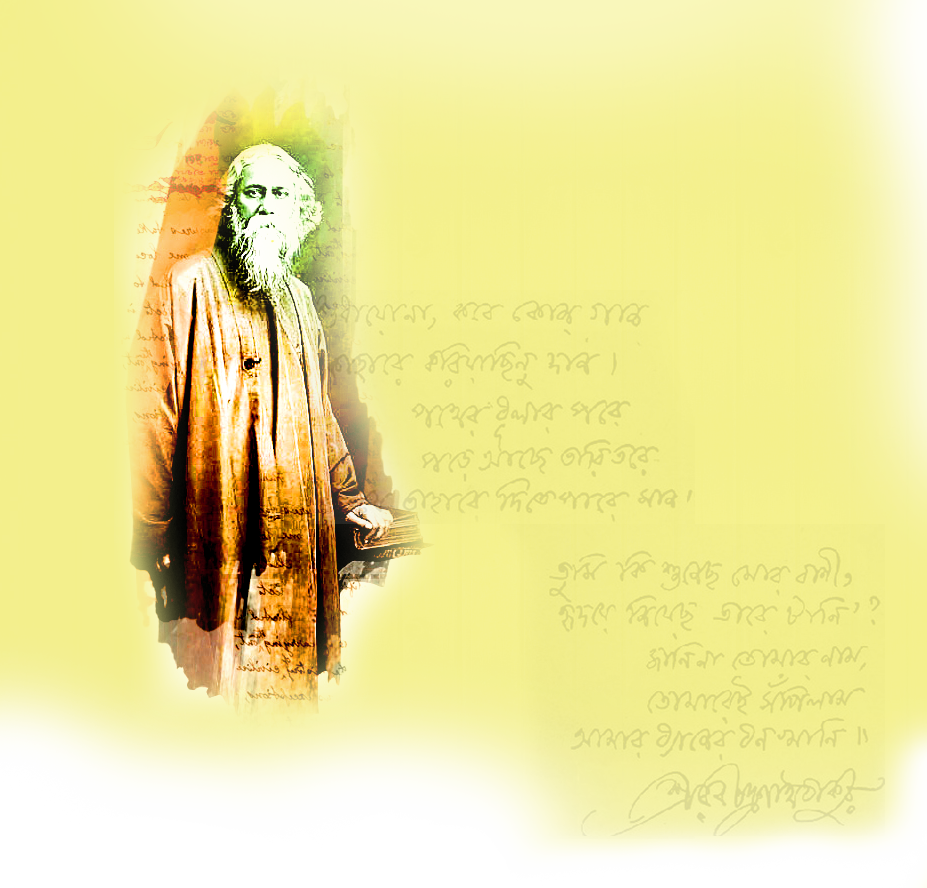

Polymath
For detailed information on Rabindranath’s personal and family life, flourishing of his genius from childhood to manhood, the reader is referred to the work of legendary film maker and many international award winner Satyajit Ray’s eponymous film,“Rabindranath Tagore”, in 1961, the centennial year of the poet’s birth.
The poet was an astoundingly prolific author in all genres of literature composing novels, short stories, essays, lectures, letters of correspondence and travel diaries to China, Japan, East Asia, Europe and the Americas.
Educationist - Vishwa Bharati the international university which the poet compared to a ferry boat carrying the treasures of his life. Rabindranath said:
“ Visva-Bharati represents India where she has her wealth of mind which is for all. Visva-Bharati acknowledges India's obligation to offer to others the hospitality of her best culture and India's right to accept from others their best”.
- Patha Bhavana: It is the oldest school of the university known as the university school of Santiniketan. It was started by Rabindranath Tagore in 1901 so he could educate his own children. Among the glitterati alumni were the former Prime Minister Indira Gandhi, Nobel laureate Amartya Sen and Satyajit Ray, who won the Life time Achievement of the Academy,AMPAS in Hollywood and a plethora of prestigious national and international film awards.
There are other schools and preparatory schools under the aegis of the university school.
- Mrinalini Ananda Pathsala.
- Santosh Pathsala.
- Siksha Shatra.
- Uttar Shiksha Sadana.
- The China Bhavana (Institute of Chinese Language and Culture) was started in 1937 by the visionary poet. International scholars taught and studied here on Sino-Indian studies, Buddhism and Chinese philosophy.
- Darshan Bhavana :(Institute of Philosophy)This department is well known for research and teaching.
- Kala Bhavan, Santiniketan: The Kala Bhavana (Institute of Fine Arts) is one of the most well-known faculty and student body. Many famous artists, painters, sculptors and miscellaneous crafts were associated with this school. It is most famous for the spread of Bengal School of Art.
- Rabindra Bhavana :(Institute of Tagore Studies and Research - Uttarayan ).
- Sangeet Bhavana :(Institute of Dance, Drama & Music): The eminent Rabindra-sangeet (Tagore music) maestro, Kanika Bandyopadhyay was a principal of Sangeet Bhavana and a member of the Vishwa Bharati music board. Numerous nationally famous artists, musicians, dancers were associated with this school.
- The Siksha Bhavana :(Institute of Science) includes the Department of Biotechnology (DBT), Centre for Environmental Studies, Physics, Chemistry, Mathematics, Statistics, Computer Science, Botany and Zoology.
- Shilpa Sadan :(Institute of Craft and Design, Sriniketan) is a reputed institute of Visva Bharati engaged in promoting crafts and design education which was set up by Rabindranath Tagore in 1922 to uplift craft and craftsmen, thereby improving the rural economy.
- The Vidya-Bhavana :(Institute of Humanities & Social Sciences) includes the humanities and social science departments, such as the Department of History and the Department of Economics.
- Vinaya Bhavana (Institute of Education)
- Computer Centre (Centre for Instruction, Research and Extension Activities)
Rabindranath as an Agricultural Reformer
- Sriniketan, literally the Abode of Lakshmi, traditionally the deity associated with growth, good fortune and wealth is at once an Agricultural university and a workshop for producing many cottage industry items. Lenny Elmhirst and the poet’s son were largely responsible for the development and functioning of this institution, under the vision and guidance of the poet.
- Rural Extension Centre (Sriniketan)
- Palli Charcha Kendra (Sriniketan)
- Palli-Samgathana Vibhaga (Institute of Rural Reconstruction-Sriniketan)
- Palli Siksha Bhavana (Institute of Agricultural Science - Sriniketan)
Rabindranath as a Painter
Painter of about 4000 water color, oil canvas works, sketches and doodles, the poet’s paintings were exhibited in London and Paris. A fancy mistress the poet called the muse of painting toward the twilight of his life, who eclipsed the other muses such as Erato, Calliope or Melpomene. Here are the poet’s own words:
Lady of lines, these words are not an alien invasion,
Come to set a limit to your realm.
They are but some noisy birds
That for a moment flit across your garden
While your meaning lies far behind their chirpings.
This art too grew unconsciously in the poet as he was deleting and editing his own work of poems and songs by doodles, scribbles etc. In his discussion with Einstein about painting, lines and colors the scientist calls the poet’s comparisons and characterizations as “beautiful.”
In Something Old, Something New, publisher Marg Publications, a sesquicentennial anniversary work, Mulk Raj Anand discusses the Paintings of Rabindranath Tagore in detail in a 43 page treatise. There are more articles in this book on Rabindranath’s paintings for those who are interested.
Rabindranath treated his friends with great esteem and even wrote poems on them. A special friend was poet Satyendranath Datta, who had silenced many unfair critics of the poet. He was younger than Rabindranath and also passed away before the poet. A grateful and grief stricken poet composed a 3 page poem on Satyendranath, part elegy and part eulogy. Satyendranath was also a poet of great inventions in Bengali rhymes and meters and is known as a wizard of rhymes among Bengal’s poets.
The scientist Jagadish Chandra Bose was the first Fellow of Royal Society. Rabindranath felicitated the scientist when he became a Fellow of the Royal Society and composed a poem in his honor.
Associates: Leonard Elmhirst – The poet met Lenny when Rathindra, Tagore’s only surviving son was studying Agriculture in Illinois.
CF Andrews: Acronym CFA, Mahatma Gandhi called him affectionately Christ’s faithful apostle. Andrews spent his life improving the life of the Indian people in his service to Gandhi and the poet.
Professor Amiya Chakravarty - Literary Secretary to the poet. Professor Chakravarty one of the most renowned Bengali poets in the post Tagore era, took down by hand the 2 of the four meeting dialogue that are available on the internet. He earned his Ph. D. from Oxford University in English literature. After the death of poet Tagore, Prof. Chakravarty took teaching assignments in the USA. Einstein invited him and made him a member in the Institute of Advanced Studies in Princeton.
Letters between Romain Rolland, the French universalist and winner of the Nobel Prize for literature in 1915 have been published by Krishna Kripalani.
German count Hermann Keyserling founded the School of Wisdom in Europe and asked the poet to teach there.
Conversation between HG Wells and the poet is also published over the internet.
Eminent teacher of Philosophy and a prolific author of philosophical treatises, Sarvepalli Sir Radhakrishnan was the second president of India. He penned the erudite book “The Philosophy of Rabindranath Tagore.”
- Prominent Friends: Romain Rolland, Albert Einstein, Hermann Keyserling, Sir Jagadish Chandra Bose, Sarvepalli Sir Radhakrishnan, poet Satyendranath Dutta.
- Admirers: Great many peoples all over the world.
- Rabindranath's rise and acceptance in the world - cultural and peace mission in 35 countries and 3 continents - Asia, Europe, North and South America
- Creation of the Golden Book in 1931 on his 70th birthday by his most notable admirers - Mahatma Gandhi, Albert Einstein, Romain Rolland, Kostes Palamas, Sir Jagadish Chandra Bose; contributions from 300 authors, artists, scientists, thinkers, statesmen, kings and common folks all around the world.
- Publication of the Centenary Volume by Sahitya (Literature) Academy in New Delhi in 1961. Albert Schweitzer, Pearl S Buck, Robert Frost, Sarvepalli Sir Radhakrishnan and other Nobel literature laureates, artists, scholars, thinkers, statesmen from many countries paid glowing tributes.
- United Nations and UNESCO recognize Rabindranath as giant Tagore - Guru of mankind for ages in 2009 and 2010-preceding the poet's sesquicentennial birth anniversary in May, 2011.


